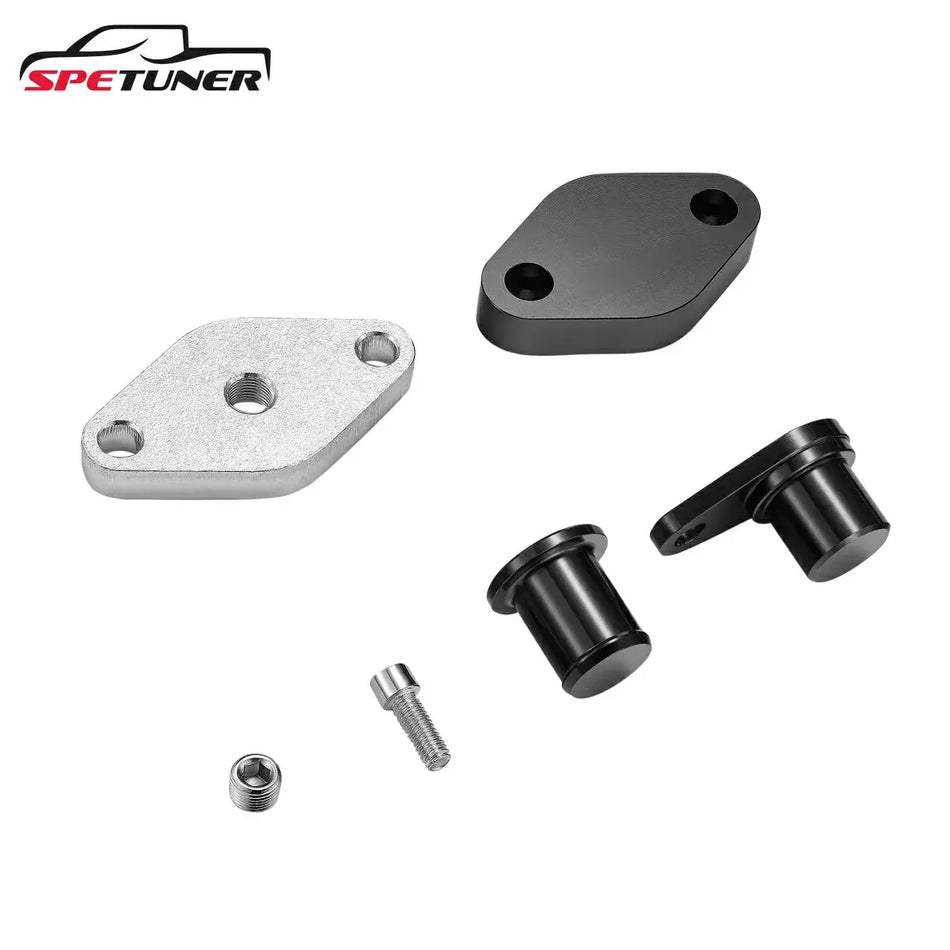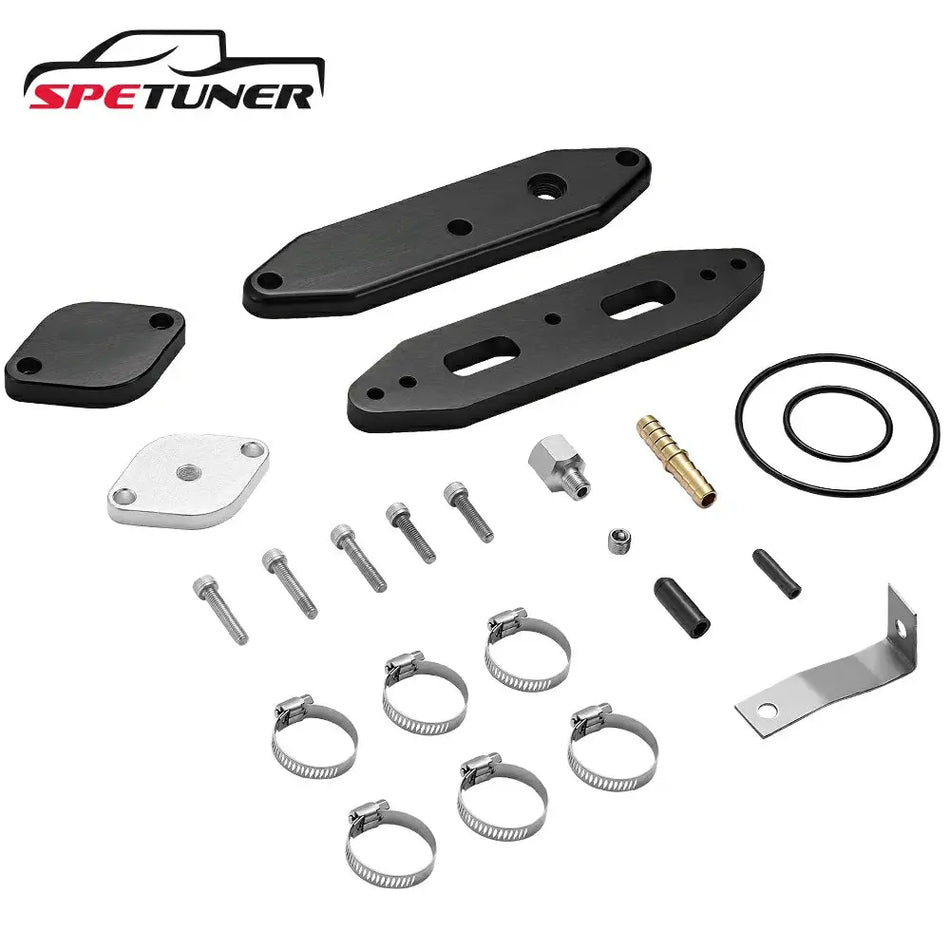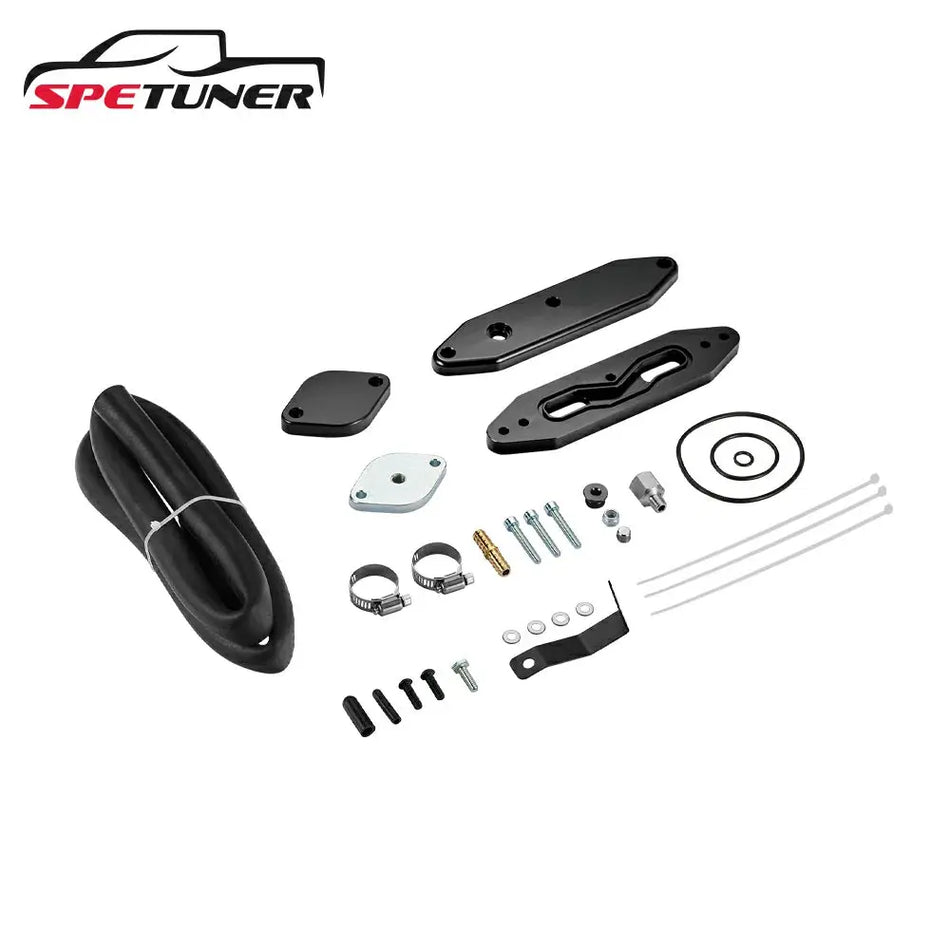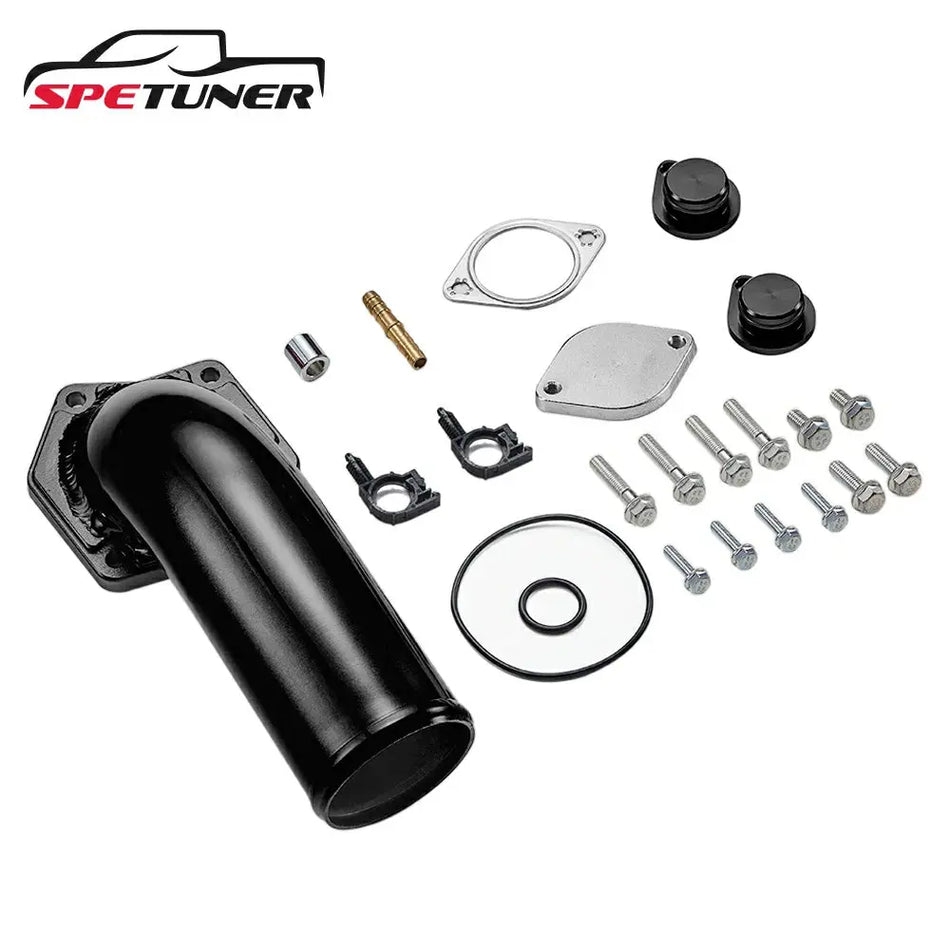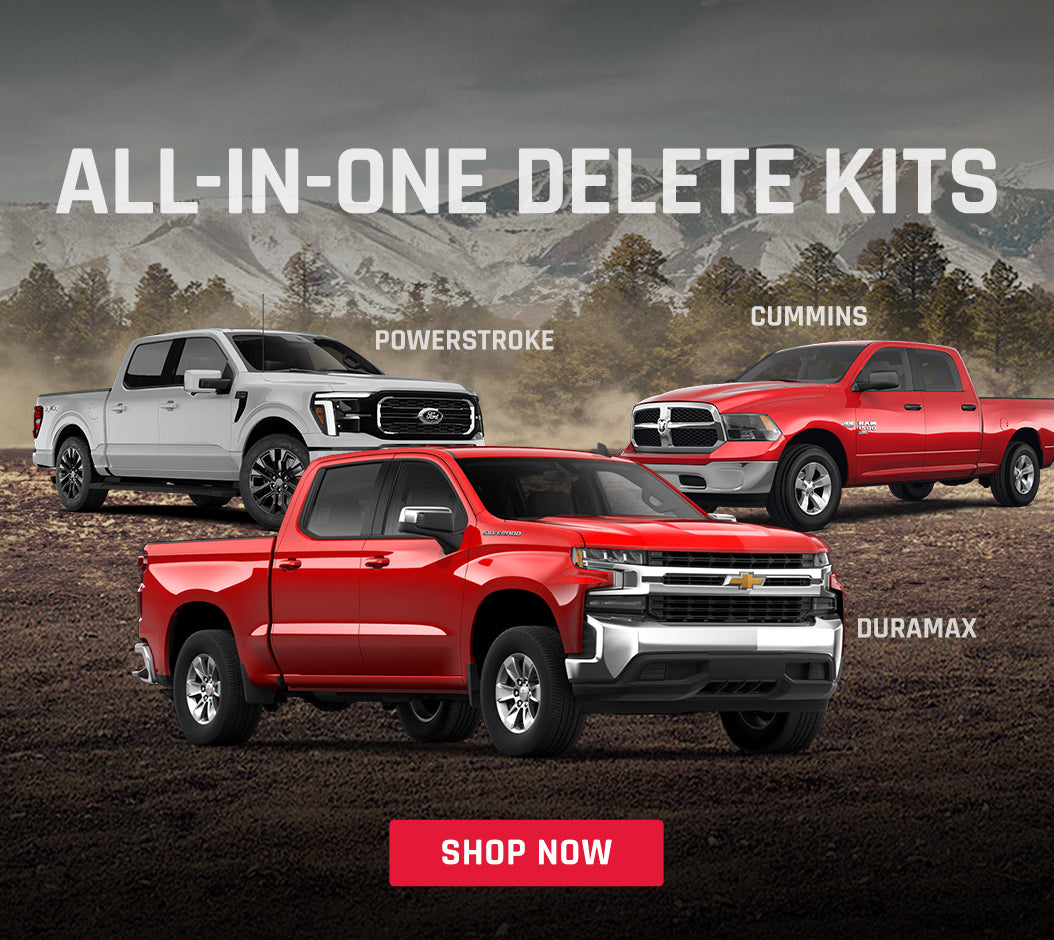Author Introduction
Hello, I’m Lars, a diesel performance enthusiast with years of experience tuning and upgrading heavy-duty diesel engines. I work at SPETUNER, where we specialize in high-performance parts for diesel trucks, including intake, exhaust, engine, and deletion systems. My expertise lies in helping truck owners optimize engine performance, particularly for popular models like the Nissan Titan 5.0 Cummins. In this article, I’ll be diving deep into the most common issues with the 5.0 Cummins engine and offering practical solutions to enhance its performance.
Introduction
The Nissan Titan 5.0 Cummins engine, while robust and powerful, is not without its issues. Many owners encounter problems, especially with the emission systems and other critical components. In this article, we’ll explore the most common problems with the 5.0 Cummins engine, discuss potential solutions, and highlight the benefits of utilizing a diesel delete kit to optimize performance. If you're looking to get the most out of your diesel engine, read on to discover how these solutions can elevate your driving experience.
1. DEF Pump Failure: A Major Concern
The DEF (Diesel Exhaust Fluid) pump in the 5.0 Cummins engine plays a critical role in reducing harmful emissions by injecting DEF into the exhaust stream. However, many owners report frequent DEF pump failures that can severely impact engine performance and emissions. This issue is typically caused by contaminants in the DEF fluid or the pump itself, leading to malfunction.
Symptoms of DEF Pump Failure:
- Engine enters limp mode, reducing power.
- Service DEF system light appears on the dashboard.
- Potential fluid leaks around the pump area.
Replacing the DEF pump can be expensive, and for those who want to bypass these issues entirely, a diesel delete kit is an option. With the Nissan Titan 5.0 Cummins delete kit, you can eliminate the DEF system altogether, avoiding the pump failure and improving overall engine performance.
If you’re dealing with constant DEF-related issues, a diesel delete might just be the solution to consider. By deleting the DEF system, you not only save on repairs but also unlock your engine’s full potential.

2. EGR Valve and Cooler Problems
The EGR (Exhaust Gas Recirculation) system in the 5.0 Cummins engine is designed to reduce nitrogen oxide (NOx) emissions by recirculating exhaust gases back into the engine's intake. While this helps meet emission standards, it’s also a common source of problems for truck owners. Over time, the EGR valve and EGR cooler can become clogged with carbon buildup, leading to inefficient engine performance, higher temperatures, and even engine stalling.
Common Issues with EGR System:
- Carbon buildup causes EGR valve to stick, leading to improper exhaust flow.
- Leaky EGR coolers that lead to coolant mixing with exhaust gases, resulting in engine damage.
- Reduced engine efficiency and poor fuel economy due to restricted airflow.
How to Solve EGR Problems: One of the most effective ways to solve EGR valve and cooler issues is to remove the entire EGR system. By using an EGR delete kit, you can eliminate the problematic EGR valve and cooler, allowing the engine to breathe more freely. This not only restores engine efficiency but also improves fuel economy and reduces maintenance costs.
Many owners turn to SPETUNER Diesel Delete Kit, specifically designed for the Nissan Titan 5.0 Cummins, to remove these systems. The EGR delete kit ensures that your engine operates without the restrictions caused by these emissions systems.
Benefits of EGR Deletion:
- Increased horsepower and torque due to improved airflow.
- Better engine response with fewer system-related failures.
- Lower maintenance costs by removing problematic components.
Now that we’ve tackled EGR-related issues, let’s dive into another common problem that can significantly impact your engine's longevity—turbocharger failure.
3. Turbocharger Failure: Causes and Remedies
The turbocharger is a vital component in the 5.0 Cummins engine that enhances performance by forcing more air into the engine’s cylinders, which results in more power. However, turbo failure is a common issue, especially in diesel engines that see a lot of heavy-duty use, like the Nissan Titan XD.
Causes of Turbo Failure:
- Oil Starvation: The turbo relies heavily on oil for lubrication. A lack of proper oil flow can lead to premature wear and eventual failure.
- Contaminants: Dirt, carbon buildup, and debris from the intake system can damage the turbo’s bearings and seals.
- Excessive Heat: High engine temperatures or improper cooling can lead to the breakdown of turbocharger components.
Symptoms of Turbo Failure:
- Loss of power: A noticeable drop in engine performance and throttle response.
- Whining noises: Unusual high-pitched sounds coming from the turbo during acceleration.
- Excessive exhaust smoke: Black or blue smoke may indicate a problem with the turbo seals.
How to Solve Turbo Failure:
Maintaining the turbocharger is key to preventing costly failures. Regular oil changes and ensuring the oil filtration system is functioning properly can go a long way. If your turbocharger is beyond repair, consider upgrading to a higher-performance turbo to maximize power output.
However, if you’re seeking a more permanent solution to turbo-related issues, it’s worth exploring the option of upgrading your entire turbo system. Many owners of the Nissan Titan 5.0 Cummins opt for a turbo upgrade that can handle increased power and boost efficiency.
By removing unnecessary restrictions and enhancing the intake system, you’ll not only improve turbocharger lifespan but also boost overall engine performance.
4. Fuel Injection Pump Problems
The fuel injection pump plays a critical role in delivering the right amount of fuel to the engine. In the 5.0 Cummins, issues with the fuel injection system can lead to poor engine performance, misfires, or even total engine failure. Common problems include fuel pump failure, clogged injectors, or improper fuel delivery.
Symptoms of Fuel Injection Pump Issues:
- Hard starting or difficulty starting the engine.
- Engine misfires or rough idling.
- Decreased power output during acceleration.
How to Solve Fuel Injection Problems:
To maintain optimal performance, it's important to clean the injectors regularly and replace the fuel filter as needed. If the pump is showing signs of failure, replacing it with a high-quality, aftermarket fuel pump is often necessary. Additionally, using high-quality diesel fuel can reduce contaminants that clog the fuel system.
For a more advanced solution, many diesel enthusiasts choose to install SPETUNER Diesel Delete Kit to remove unnecessary emission control systems, including components that could interfere with proper fuel injection. This upgrade can lead to smoother fuel delivery and improved engine efficiency.
5. DPF (Diesel Particulate Filter) and SCR System Problems
The Diesel Particulate Filter (DPF) is an essential component of modern diesel engines, designed to trap soot and particulate matter from the exhaust gases. The Selective Catalytic Reduction (SCR) system, which uses a combination of DEF fluid and a catalyst, is another part of the emissions control system in the 5.0 Cummins engine. Both systems help reduce harmful emissions but can cause performance issues when they malfunction.
Common Problems with DPF and SCR Systems:
- Clogged DPF: Over time, the DPF can become clogged with soot, causing a decrease in engine performance. This can lead to forced regeneration cycles, where the engine runs at higher temperatures to burn off soot, which can result in poor fuel economy and increased wear.
- SCR Failure: The SCR system can also fail due to issues with the DEF pump, sensor failures, or contamination of the DEF fluid. When this happens, the system may no longer effectively reduce NOx emissions.
- Reduced Engine Power: A clogged DPF or malfunctioning SCR system can lead to a loss of power, engine hesitation, and poor throttle response.
How to Solve DPF and SCR Issues:
- Regular Maintenance: Regularly maintaining the DPF, including using the correct DEF fluid and monitoring sensor functions, can help prevent problems. If your DPF is clogged, it may need to be cleaned or replaced.
- SPETUNER Diesel Delete Kit: If you want to avoid ongoing DPF and SCR system issues, a diesel delete kitis an effective solution. The Nissan Titan 5.0 Cummins delete kit includes components to remove both the DPF and SCR systems, eliminating the need for costly repairs and regeneration cycles. By removing these components, you’ll also improve exhaust flow and engine performance, resulting in more power and better fuel economy.
- Alternative Solutions: If you don’t want to fully delete the systems, consider using aftermarket products designed to clean or reduce the maintenance of the DPF and SCR, such as performance chips or DPF cleaning additives.
Benefits of Removing DPF and SCR:
- Improved engine performance: With fewer restrictions, your engine can breathe better, improving power output.
- Better fuel efficiency: Without the need for constant regeneration, fuel efficiency is often improved.
- Cost savings: Reduced repair and maintenance costs from ongoing DPF and SCR issues.
By eliminating the DPF and SCR systems using a diesel delete kit, you can enhance engine reliability and boost performance.

6. Transmission Issues and Solutions
While the 5.0 Cummins engine is known for its power and torque, some owners experience transmission issues, especially with the Nissan Titan XD. Common problems include hard shifting, slipping gears, and transmission overheating. These issues are often due to the increased stress placed on the transmission when towing heavy loads or off-roading.
Common Transmission Problems:
- Slipping Gears: The transmission may fail to engage properly, leading to a loss of power or erratic shifting.
- Hard Shifting: Difficult or jerky gear changes can be a sign of low transmission fluid or internal damage.
- Overheating: Overheating occurs when the transmission is under strain, such as towing large loads or driving aggressively.
How to Solve Transmission Issues:
- Transmission Fluid: Regularly check and replace the transmission fluid to ensure smooth operation. Using high-quality, manufacturer-recommended fluid can prevent wear and overheating.
- Upgraded Transmission Cooler: If you frequently tow or off-road, installing an upgraded transmission cooler can prevent overheating and prolong the life of the transmission.
- Transmission Tuning: Some owners opt for transmission tuning, which involves modifying the transmission's behavior for better performance, especially when using larger tires or towing heavier loads.
- Diesel Delete Kit Benefits: By removing restrictive emissions components with a diesel delete kit, you can reduce engine strain, which can ultimately relieve some of the pressure on the transmission, especially during heavy towing or acceleration.
7. Engine Overheating and Cooling System Upgrades
Engine overheating is a common issue in diesel engines, including the 5.0 Cummins, particularly in trucks used for heavy-duty tasks like towing or off-roading. The cooling system is crucial in regulating engine temperature, but issues such as a malfunctioning thermostat, radiator leaks, or a clogged coolant system can lead to overheating.
Common Causes of Engine Overheating:
- Coolant Leaks: A leak in the radiator, hoses, or coolant reservoir can lead to a loss of coolant and cause the engine to overheat.
- Faulty Thermostat: A stuck or malfunctioning thermostat can prevent the engine from reaching the correct temperature.
- Clogged Radiator: Dirt, debris, or mineral buildup can obstruct coolant flow, causing inefficient cooling.
How to Solve Overheating Issues:
- Regularly Check Coolant Levels: Ensure that the coolant levels are always within the recommended range and top off as necessary.
- Upgrade the Cooling System: For those using their trucks for towing or off-roading, upgrading to a high-performance radiator and an auxiliary cooling system can prevent overheating during strenuous activities.
- Diesel Delete Kit for Cooling Efficiency: Removing restrictive systems like the DPF or EGR with a diesel delete kit can also improve cooling efficiency. By reducing the engine's load and increasing airflow, these modifications can help the engine run cooler and prevent overheating.

For 16-19 Nissan Titan 5.0L Cummins EGR Delete Kit+Hot Side Intercooler Piping Kit+UP-Pipe
Nissan Titan 5.0L Cummins
$398.00
Buy NowConclusion
The 5.0 Cummins engine in the Nissan Titan XD offers incredible power and performance, but like any engine, it’s not without its common issues. From DEF pump failures and EGR valve problems to turbocharger and fuel system malfunctions, owners may encounter challenges over time. However, with the right solutions—such as regular maintenance, timely repairs, and considering options like the SPETUNER Diesel Delete Kit—you can address these issues head-on.
Whether you choose to remove the DPF and EGR systems with a diesel delete kit or upgrade to more robust components, each decision you make can lead to a more reliable, efficient, and powerful engine. If you’re ready to take your 5.0 Cummins performance to the next level, these solutions will ensure you get the most out of your diesel truck.
FAQs
Q1: Is the 5.0 Cummins engine reliable?
A1: The 5.0 Cummins engine is generally reliable but comes with its set of challenges. Common issues like DEF pump failures, EGR problems, and DPF clogging can affect long-term performance. With proper maintenance and timely fixes, it can be a solid engine, but owners should be prepared for potential repairs, especially if the vehicle is used heavily or for off-road purposes.
Q2: Why was the 5.0 Cummins discontinued?
A2: The 5.0 Cummins engine was discontinued primarily due to high production costs, limited demand, and emission system failures. Despite being a capable engine, it didn't offer significant towing advantages over gasoline-powered trucks, and the complex emission systems (like EGR and DEF pumps) were prone to costly repairs. Nissan decided to focus on other powertrain options after the 2019 model year.
Q3: What Cummins engines should I avoid?
A3: While Cummins engines are known for their durability, some models, particularly early generations of the 6.7 Cummins, can have issues with fuel injectors, turbochargers, and EGR systems. It's essential to do your research and check for common problems within the specific model year. If you're looking for a trouble-free experience, avoid engines with unresolved emission system issues or poorly maintained units.
Q4: How much horsepower does a 5.0 Cummins make?
A4: The 5.0 Cummins engine produces about 310 horsepower and 555 lb-ft of torque in its stock form. While it’s not the highest in terms of raw power compared to other diesel engines, it delivers solid performance for everyday driving and moderate towing needs. If you want to push your engine further, consider upgrading components like the turbocharger and utilizing a diesel delete kit to boost power.
Q5: What are the most common issues with the 5.0 Cummins engine?
A5: The most common issues with the 5.0 Cummins engine include DEF pump failure, EGR valve and cooler problems, turbocharger failures, and DPF system clogging. These issues are typically related to the emissions control systems, which can be costly to repair. Regular maintenance and using a diesel delete kit can help mitigate these problems and improve engine reliability.
Q6: Can I improve performance on my 5.0 Cummins engine?
A6: Absolutely! If you’re looking to improve performance, consider upgrading to a SPETUNER Diesel Delete Kit. By removing the EGR, DPF, and DEF systems, you can increase horsepower, improve throttle response, and reduce engine strain. Other upgrades like a better turbocharger or intake system can also make a noticeable difference in power and efficiency.
Q7: Should I remove the EGR system from my 5.0 Cummins?
A7: Removing the EGR system can improve performance by eliminating carbon buildup and enhancing airflow to the engine. It also reduces maintenance costs. However, this modification can affect your emissions compliance, and some areas may have regulations around EGR deletion. If you decide to delete it, using a proper EGR delete kit is essential for optimal results.
Q8: What’s the benefit of using a Diesel Delete Kit on the 5.0 Cummins?
A8: A Diesel Delete Kit removes restrictive components like the EGR, DEF, and DPF systems, significantly improving engine performance. You’ll experience increased horsepower, better fuel economy, and reduced maintenance issues. The Nissan Titan 5.0 Cummins delete kit specifically addresses the common emission system failures, offering a cost-effective way to maximize your truck’s potential.
Q9: How can I prevent turbocharger failure in my 5.0 Cummins engine?
A9: Regularly changing the oil and ensuring proper oil flow is essential to prevent turbocharger failure. Keep an eye on the oil filter and change it according to the manufacturer’s recommendations. If you’ve already experienced turbo issues, upgrading to a performance turbo can help handle higher loads and boost performance. Avoiding unnecessary engine heat is also crucial to keeping your turbo in good shape.
Q10: Is it legal to use a Diesel Delete Kit on my 5.0 Cummins?
A10: Diesel delete kits are legal for off-road use, but they may not comply with emission regulations in some states, especially for vehicles driven on public roads. It’s essential to check your local laws before proceeding with a diesel delete kit. If you’re using your Nissan Titan 5.0 Cummins primarily for off-road activities, a delete kit can help optimize performance without worrying about emissions compliance.


